03 Sep Foster a Resilient Recovery – 15 Years After Katrina
Hurricane Katrina’s powerful surge swept casino barges onto highways, upended bridges, and inundated areas untouched by any prior storm, making the point with sheer brute force that status quo precautions no longer were adequate. As Mississippians emerged from shelter to face a new reality, the call arose to “build back better.” For some this meant simply a sturdier, more disaster-resistant status quo, for others a utopia projected upon a blank slate, and for still others a recovery that blended cultural heritage with modern solutions to social needs. One testament to community resilience is how some disaster-wracked and disadvantaged communities engaged in civic debate over these competing visions while they rebuilt their personal lives.
Katrina survivors encountered a blizzard of new ideas and proposals from the Mississippi Renewal Forum where local leaders brainstormed with planners, engineers, and architects on how to re-envision the Coast. As each proposal came forth for public comment, organized community voices put forward their own priorities and raised objections with support and assistance from the Mississippi Center for Justice.
On the Biloxi peninsula where casino boulevards encircle a neglected but historically significant diverse neighborhood, a local relief organization, Hope Community Development Agency, commissioned its own planning process with detailed resident input and specific demands for upgraded infrastructure throughout the interior. Local advocates also forced planners to abandon the conversion of a wide residential swath into a park by proving exactly how many Vietnamese American households it would displace. As hurricane recovery delays drove off local populations, the Save Our Schools Coalition successfully fought to keep open a high-performing elementary school and local leaders pressed city officials to bring road and water system repairs to conclusion.
In North Gulfport – where municipal sprawl had encircled and bypassed historic Black communities – the North Gulfport Community Land Trust and the Turkey Creek Community Initiatives envisioned an innovative urban greenway along the historic Turkey Creek to combat flooding, foreshadowed the need to resist upstream development to preserve badly needed wetlands, and offered ways to reconnect communities bisected by highways. With support from EPA and others, the Turkey Creek greenway made progress and the Land Trust advocated to prevent intrusions from environmentally harmful expressways and multimodal transportation. The inception of this work is described in the documentary Come Hell or High Water – the Battle for Turkey Creek. Sadly, the efforts to introduce sprawl into badly endangered and federally protected wetlands serving the Turkey Creek continue today.
A byproduct of MCJ’s equity work to challenge the diversion of $600 million in housing funds to expand the state port began in 2010. At that time the State Port Authority at Gulfport proposed a massive “Port of the Future” that would massively increase the flow of cargo channeled through transportation corridors in predominantly Black communities. Grandiose forecasts of job creation were used to isolate and intimidate those who objected to the project. Undeterred, the North Gulfport Community Land Trust and other organizations formed the Port Campaign Coalition and recruited MCJ as legal counsel to require jobs justice and combat environmental injustice in connection with the expansion of the State Port at Gulfport. Over the next five years, the coalition organized a community education and advocacy initiative that led to the right-sizing of the port expansion and increased federal oversight of job creation claims by state officials. This campaign was the subject of a documentary, Above Board, produced by the Steps Coalition. Ultimately, however, state officials won federal permission to aggregate the hours of low-wage part-time casino hotel jobs to meet the required goal. The end result was fewer direct maritime jobs at the Port than before Hurricane Katrina, at a cost of over $570 million.
Starting in 2011, MCJ was part of a leadership team that undertook a multi-year, locally led Sustainable Communities Initiative planning process with support from the U.S. Department of Housing and Urban Development. This process evaluated coastal communities along a wide array of measures of sustainability – food security, transportation, fair housing, education, among others – and generated publicly available maps and reports on each topic.
Resilience can take many forms, from strengthened construction standards to elevation of buildings or reduction of construction in flood prone areas. But civic resilience is as important as time passes after a disaster and commitment wanes to putting the public interest ahead of private gain. MCJ is proud to have served and stood alongside these community organizations as they sought to keep that spirit alive.


